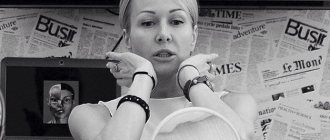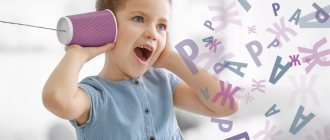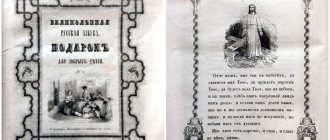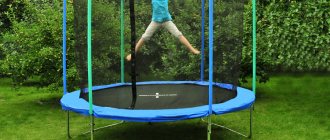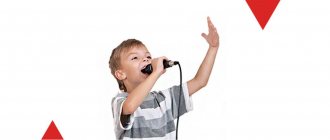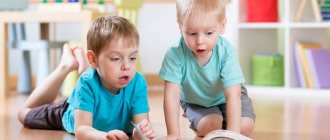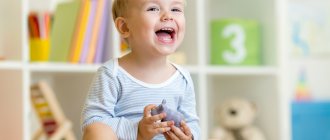During the fourth year of life, children experience one of the most significant leaps in their development. Human speech begins to be of unprecedented interest to them; they actively try to talk, repeating all the sounds that are available to them. It is at this time that parents and teachers should listen carefully, noting whether the characteristics of the child’s speech fit into the norm, and whether a 3-4 year old child requires speech therapy classes.
Articulatory gymnastics: definition
The articulation apparatus is the basis of correct speech. If it is underdeveloped, the pronunciation of sounds will suffer. The apparatus consists of the tongue, lips, larynx, vocal folds, soft and hard palate, teeth and nasopharynx. All these organs are extremely important for the development of pronunciation, which begins at birth and continues throughout life, depending on the child’s speech practice.
In children 3-4 years old, the articulatory apparatus is in a phase of active development. If you help your child during this period to correctly use the organs involved in pronunciation, future speech problems will significantly decrease. The most effective help is to perform articulatory gymnastics.
Possible causes of violations
Disturbances in the speech development of a preschooler may be associated with medical indicators or the child’s social environment.
Medical reasons:
- Mother's illnesses during pregnancy, smoking, alcoholism and drug addiction;
- Birth injuries and other complications;
- Head injury in the first 3 years of the baby;
- Left-handed child;
- The special structure of the articulatory apparatus;
- Heredity and genetic predisposition to speech disorders.
Social environmental factors:
- The baby hears little correctly delivered speech, adults are not interested in constant communication with him;
- Adults speak incorrectly (with mistakes, burr) or “lisp” with the child. As a result, by repeating, the baby remembers this manner of speech;
- An adult demands to pronounce the sound correctly, but at the same time does not show correct articulation. Often this leads to incorrect sound production, which subsequently has to be corrected (for example, “R” is pronounced with the throat).
Parents should talk to their children a lot
Preparing for gymnastics
The main goal that must be achieved in the process of work is training the basic location of the organs of articulation, developing mobility, and helping to differentiate certain movements. When performing articulation gymnastics, it is important to choose exercises that meet the needs of a particular baby. Tasks are preferable in a certain sequence so that the complexity increases.
What is important to consider when preparing for classes:
- Child's motivation. If the activities are not interesting to the child, the benefit from them will be minimal. Pictures, sounds, a mirror and other auxiliary materials must be used in the work.
- The mirror helps the child see the position of the tongue and lips. He sees an adult, repeats after him, then correlates the position of his organs. It is extremely important for him to see his lips and tongue, since he cannot yet understand their position.
- Classes should be performed in a cycle. Simple tasks are given first, then more difficult ones. It is important to focus on the pace of a particular child. What one learns in 2 weeks, another preschooler may not understand for several months.
- Repetition of previous exercises is required. A skill is formed after acquired skills. Therefore, these skills need to be refreshed.
- Consistency is important in delivering the right speech. Therefore, exercises should ideally be performed 2 times a day, and take 5-10 minutes - this is the time of high concentration of attention of a 3-4 year old preschooler.
- At 3-4 years old, it is important to pay attention to the development of the tongue - exercises are aimed at the muscles of the organ.
- A good bonus of the lesson is the musical accompaniment.
There are many exercises and concepts for doing them. Some spend them in a fairy tale, others with separate tasks. Specialists approach each child individually, choosing what will be acceptable for him.
How specialists work: exercises, games, manuals
One of the most obvious reasons for the incorrect pronunciation of sounds by young children is the imperfection of their speech apparatus. Speech therapy gymnastics helps solve this problem.
There are many fun exercises that children enjoy doing in front of the mirror, repeating after the speech therapist.
- “Window” is the simplest exercise in which the baby must first open his mouth as wide as possible (“it’s hot, open the window!”), and then close it (“it’s cold!”).
- “Brushing your teeth” - the child needs to smile and in this state open his mouth slightly, then run his tongue over the upper and lower teeth, as if with a toothbrush.
- “Cup” - open your mouth again in a smile, stick your tongue out further and give it the shape of a bowl, raising the tip and edges.
- “Fipe” - diligently stretch out your lips, as if with the intention of whistling, while clenching your teeth.
- “Painting the ceiling” - smile, open your mouth slightly and move the tip of your tongue across the sky, as if painting it with a brush.
Children like this kind of gymnastics for the tongue, but it quickly tires them. At the next stage of the lesson, you can move directly to oral speech. Various descriptive games will help with this. For example, the teacher takes out an object or toy from a bag or box and asks the child to name it. Then he asks about the properties and characteristics of the object, pushing the child to describe it (the ball is round, green, small, bouncy). If successful, you can complicate the game: ask the child to put his hand into a bag with a toy and try to tell what it feels like.
The teaching aids include pipes and turntables for breathing exercises, finger toys and exercise machines, sets with tweezers for grasping small parts, tactile bags and boards - there is a very wide choice for professional speech therapists. You can purchase such things for home use, or you can make do with improvised means.
Rules and frequency of implementation at home
Any skill does not come immediately. To consolidate it, constant training is required. Let's look at the basic rules for doing gymnastics for articulation at home.
- Articulation gymnastics for children 3-4 years old is carried out when the child is most ready to assimilate information.
- Each task is carried out up to 10 times for consolidation.
- Static tasks (when you need to hold the position of organs) last up to 10 seconds. The child is not physiologically ready to hold any longer.
- It is better to perform gymnastics while sitting. This is the most comfortable position for the baby: the back and limbs are relaxed, the body is in a natural position.
The role of the book
The book serves as an integral attribute in the formation of sound pronunciation. Judge for yourself, the plot, illustrations, and new characters are of interest. Perfectly suitable for use even with varying degrees of severity of OHP. The simplest texts of folk tales are aimed at helping the little one.
Sukhomlinsky also noted:
“Reading books is the path along which a skillful, intelligent, thinking teacher finds the way to a child’s heart.”
You talk, show pictures at the same time, discuss the plot. Start reading when your heir is not talking yet. Believe me, the vocabulary is already being formed. Just read with intonation so that the tomboy wants to reproduce it. Use the easiest nursery rhymes in the initial stages.
Include imitation here. You can assign roles once the script is memorized. Copy a clumsy bear, a bunny, a fox, and the baby will happily copy! Answer questions. Only when the little sly one is already able to pronounce words out loud, but uses gestures to ask for something, do not indulge.
My daughter was one of the first to master the “give” request, before she was a year old. But when I realized that I would still get the item I was interested in, I excluded it from my vocabulary. Don't be lazy! But you can’t demand either. It is important to generate interest.
Speech error correction
When a child is 3-4 years old, correction of speech errors occurs quickly - this is a flexible age for correction and formation of new skills. It is important not to “force” the exercises - first there must be correct placement of the organs of articulation, then an increase in the tempo of the exercise.
The production of sounds is based on gymnastics. Static and dynamic tasks for the language are the basis for many sounds, especially such problematic ones as “r”, “l” and others. Before making sounds, the tongue and lips are warmed up, then the child is explained how to hold/direct them in order to get this or that sound.
If at home you cannot develop articulation, move your tongue correctly and make sounds, it is better to immediately contact a speech therapist. Prolonging the problem will lead to longer work on speech. In addition, the cause of the problem may not be hidden in articulation at all, but in the brain structures, which can only be determined by a pediatric specialist.
How to work with your child at home?
From parents, first of all, maximum attention is required to the baby, to his interests and discoveries, fears and sorrows. We need to create conditions for him to communicate with the world, take him on walks, show him new places, introduce him to people of different ages. All this broadens the mind and develops the brain, and also strengthens the attachment between children and parents.
The quality of speech is directly influenced by the development of fine motor skills, so any activities with small objects, construction toys, sand, and cereals will be of great benefit in this regard.
You can try special exercises at home. For example, the pronunciation of hissing and whistling sounds is relatively easy to practice on your own, without the intervention of a specialist. As for the sounds [r] and [l], they are considered more difficult to correct, although you can try to “set” them too.
Every parent can reproduce speech therapy gymnastics at home - it will be much more fun and easier for the baby to repeat after his mother than after an unfamiliar aunt. It will take very little time, but will bring great benefits and give pleasant emotions to the participants. For classes, you will need a mirror - preferably a large one, so that the child can freely see both his reflection and the reflection of his mother, performing the exercises “Pipe”, “Cup” and others.
After gymnastics, you can play games with answers to questions, or you can practice pronouncing words containing problematic sounds. If you write these words on cards, it will be more convenient to study. Tongue twisters that are chosen so that the necessary sounds are often repeated in them also work well. It is important to remember that pressure should not be put on the child. Games and activities should not bring him anything but joy and pleasure, otherwise the effect may be exactly the opposite.
Results and recommendations
The basis for correct sound pronunciation is the coordinated work of the articulation organs. In order for a preschooler to be able to pronounce simple and complex sounds, it is important to train the flexibility and strength of the tongue and lips. This is facilitated by articulatory gymnastics.
Timely lessons with your baby will make pronunciation easier, and he will begin to speak clearly and clearly on his own. If he has problems with sound pronunciation, such exercises will significantly reduce the time for muscle training and correction of defects.
Sluggish sound pronunciation can also be perfectly corrected by gymnastics; the result of the exercises will be correct, clear and beautiful speech. Exercises, selected in order of increasing difficulty, will help to develop important skills in the mobility of the articulatory apparatus, practicing the position of the tongue and lips. During exercise, blood circulation in these organs improves, which contributes to their greater mobility and correct position. You can start working on articulation earlier, but it needs to be done correctly!
Impact of fine motor skills
There is probably no person who has not heard about the influence of motor skills on the brain. The mechanism is simple, an impulse is given, the brain works. With children this should be done in a playful way. It is necessary to pull something out, assemble a large mosaic, etc.
I will tell you the most accessible techniques that I used for my daughter at 1.8 years old.
- Find what's at the bottom
Take 2 bowls, pour beans into one and buckwheat into the other. And we hide small souvenirs at the bottom. Let the fidget rummage and search with both hands!
- Find identical bags
We will need 9 bags. We put the same things in every 3. I used crumpled paper, cotton wool, rice. And the cub is looking for bags that feel the same.
- Cheerful Hedgehog
Take a piece of cardboard and cut out the profile of the hedgehog. We put clothespins on top, which the restless person must remove. Learn to take it off first and then put it back on.
- Knead the dough!
Every mother has baked pies at least once. Make this a habit once a week, feed your family and benefit your kids! And the secret is that your activist helps you knead with little hands. We are still sculpting!
- Little is a lot
Use toys to explain concepts, where there are few objects, where there are many. What does big mean and what does small mean?
- Coloring pages
You can't do without pencils, paints and plasticine. There is a selection of inexpensive books where you can put circles, stickers, and decorate objects, for example, a ball. Fantasy and motor skills develop. And also show, by drawing, the concepts of long - short, sort out colors, study numbers and letters.
Fun workout
Outdoor games strengthen the muscles of the child’s body, prevent flat feet, develop coordination of movement, and contribute to the development of motor skills and speech.
Types of outdoor games:
- different types of walking (side step, walking on heels, toes);
- climbing, overcoming obstacles;
- ball games;
- balance exercises (sliding down a hill, walking on an inclined bench).
Book material for classes
The main features of a good book for a 2-3 year old child:
- High quality illustrations.
High-quality images attract the child and do not move his attention beyond the boundaries of the picture. In high-quality publications, the drawings are usually bright, clear, “spacious” (on a light background, for better visual perception of the child), realistic, and the images of the characters’ bodies are proportional. High-quality illustrations develop the baby’s aesthetic taste. Communication with a book for a child is the first acquaintance with the world of art.
- Conciseness of the text.
At 2-3 years old, children cannot yet listen to long fairy tales, so short rhythmic works (poems, songs, ditties, counting rhymes, riddles) and short stories and fairy tales are the best choice for children.
List of books for young children:
1. Russian folk tales (“Turnip”, “Teremok”, “Kolobok”, “Ryaba Hen”). Promotes the development of logical thinking. For example, in the fairy tale “Turnip”, the child remembers the characters in the order in which the heroes pulled the turnip - an excellent exercise for developing memory and logic.
2. Poems. Popular authors:
- A. Barto (collection “Toys”);
- K. Chukovsky (“Fairy Tales”);
- S. Marshak (“Poems and Fairy Tales”);
- lively, lively and humorous collections of poems by I. Tokmakova “Where the Fish Sleeps”, “The Sun Walks in a Circle”;
- unusual, with non-standard rhymes, poems by G. Sapgir “Wonder Forests”;
- S. Mikhalkov (“The Most Favorite Fairy Tales and Poems for Kids”) is known for his ability to tell children about their mischief and disobedience in a light, humorous manner.
3. Fairy tales of Russian authors - V. Suteev, “Fairy tales and pictures” (with the author’s own illustrations).
4. Fairy tales of foreign writers. A prominent representative is D. Donaldson. The most famous works are the fairy tale “The Gruffalo” (about a little mouse who was able to outwit the terrible monster Gruffalo), “The Gruffalo’s Little Daughter” (the book clearly traces a useful idea - you should not go far without asking your parents, it can be dangerous).
5. Educational books - help children learn to draw, glue, and sculpt.
Features of speech therapy at 2-3 years
The main task of an adult when working with young children is to evoke onomatopoeia in any form.
Taking into account the psychology of children 2-3 years old, classes should be conducted in the form of outdoor games, varied and not long in time.
It is important to establish emotional contact with the child, interest him, gain trust, encourage activity, and praise.
This will help avoid many psychological problems associated with fear of speech.


